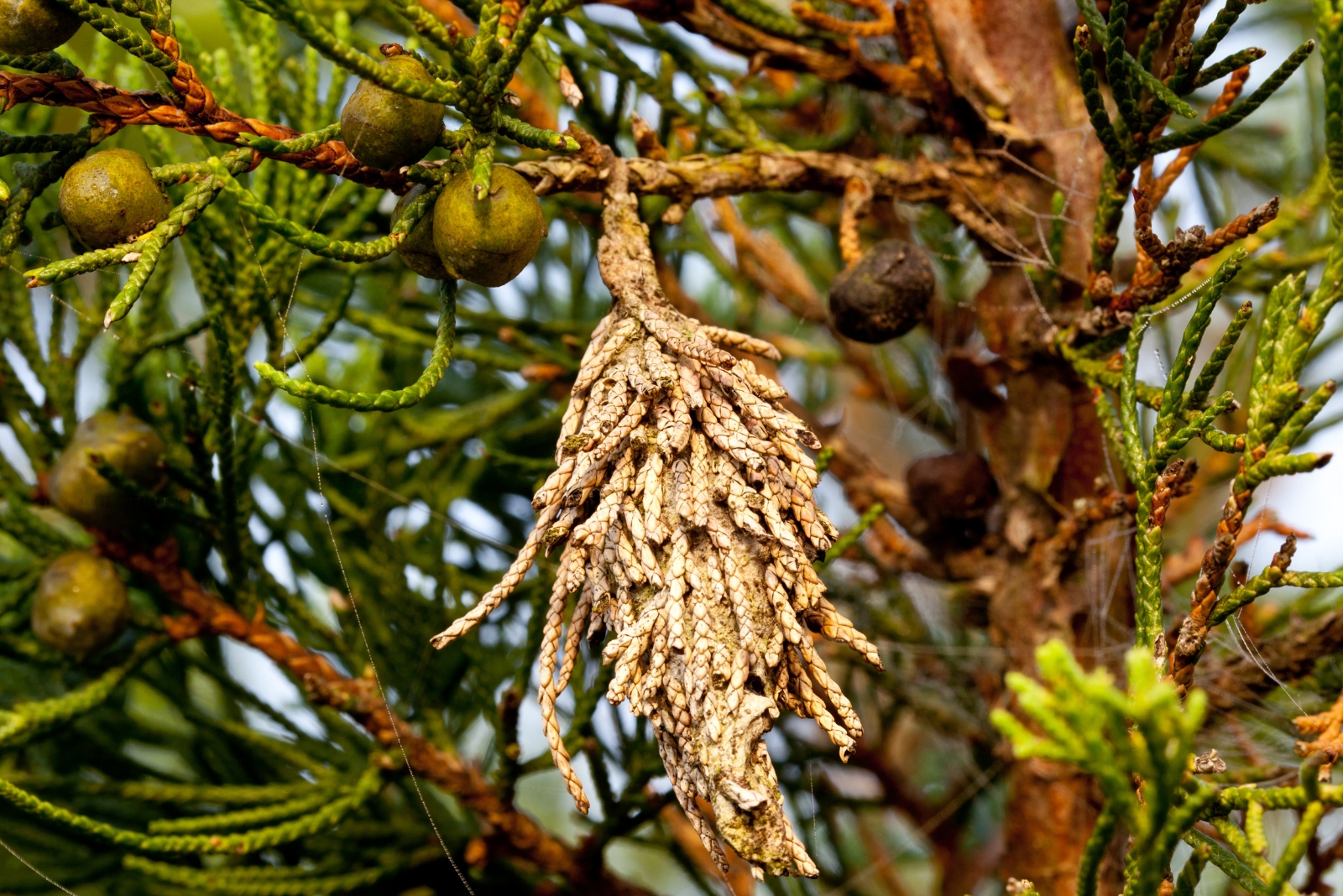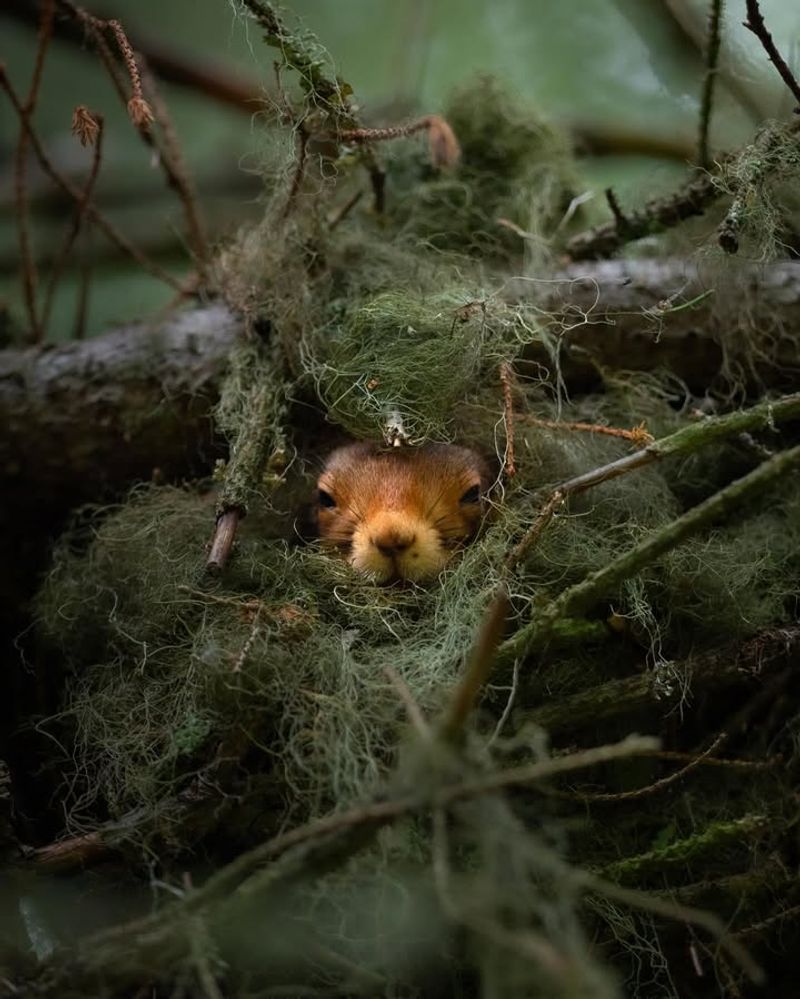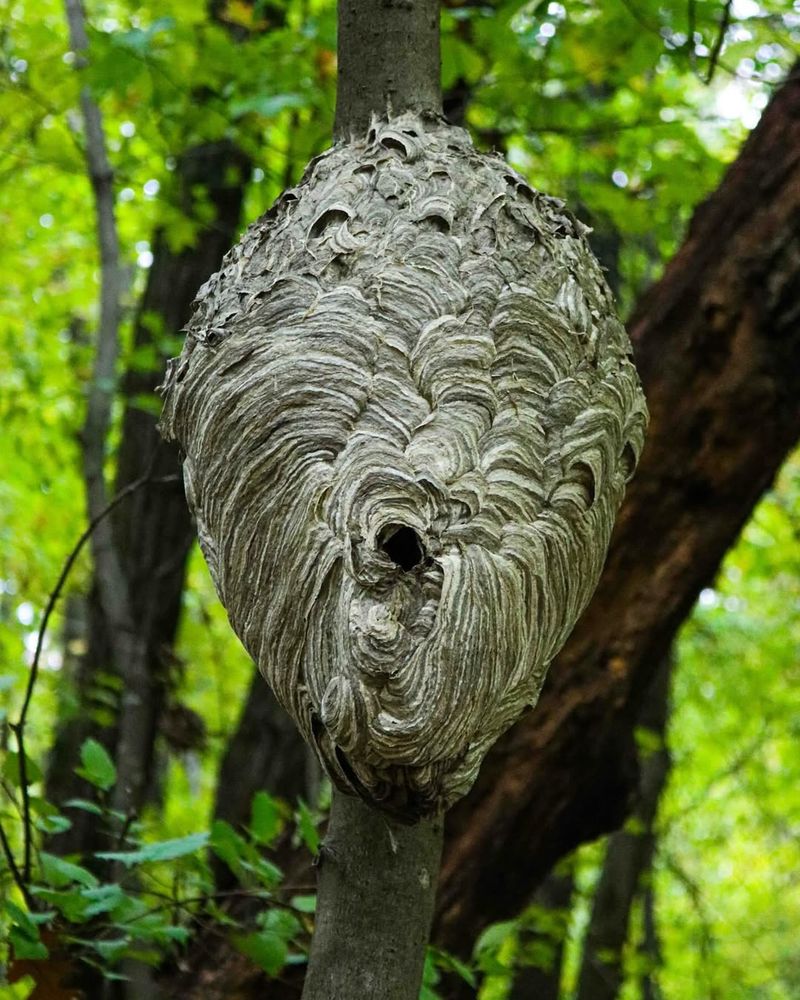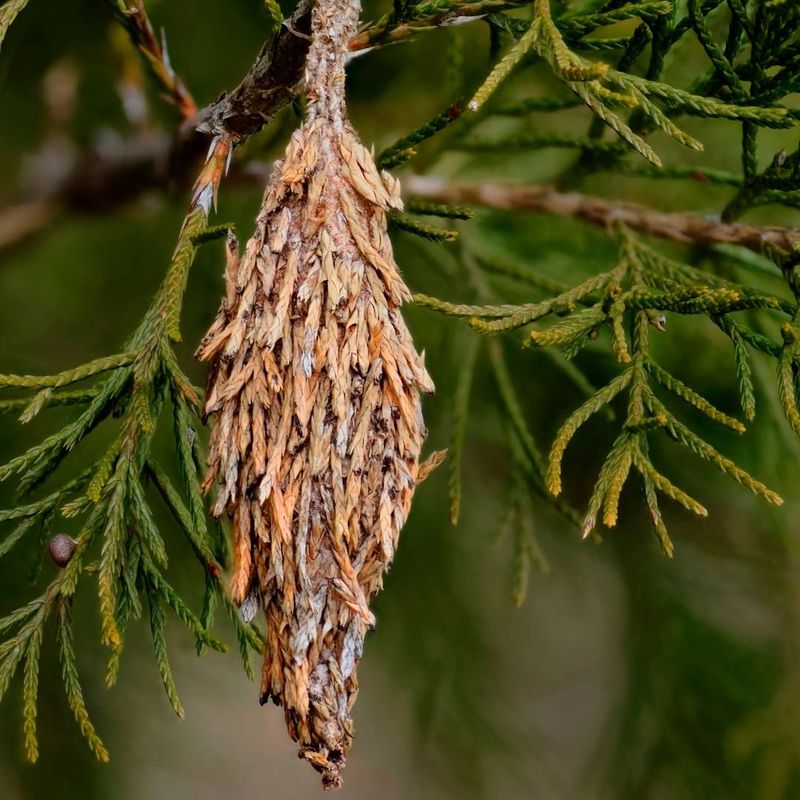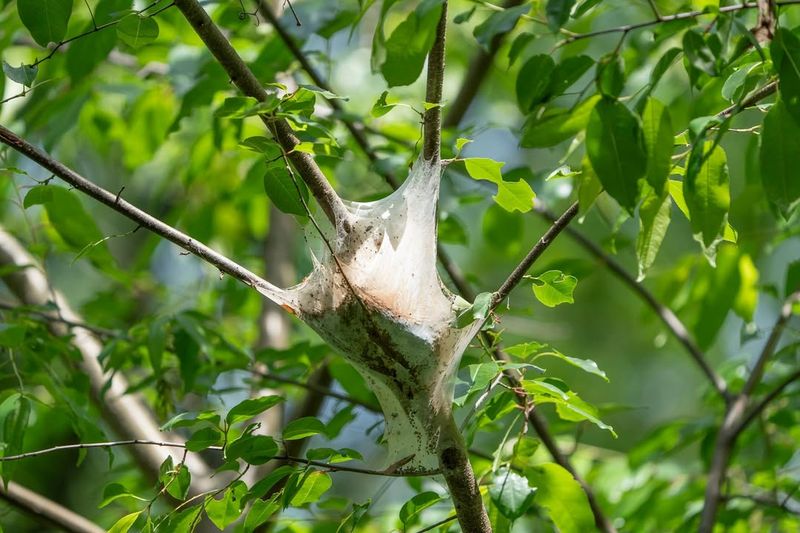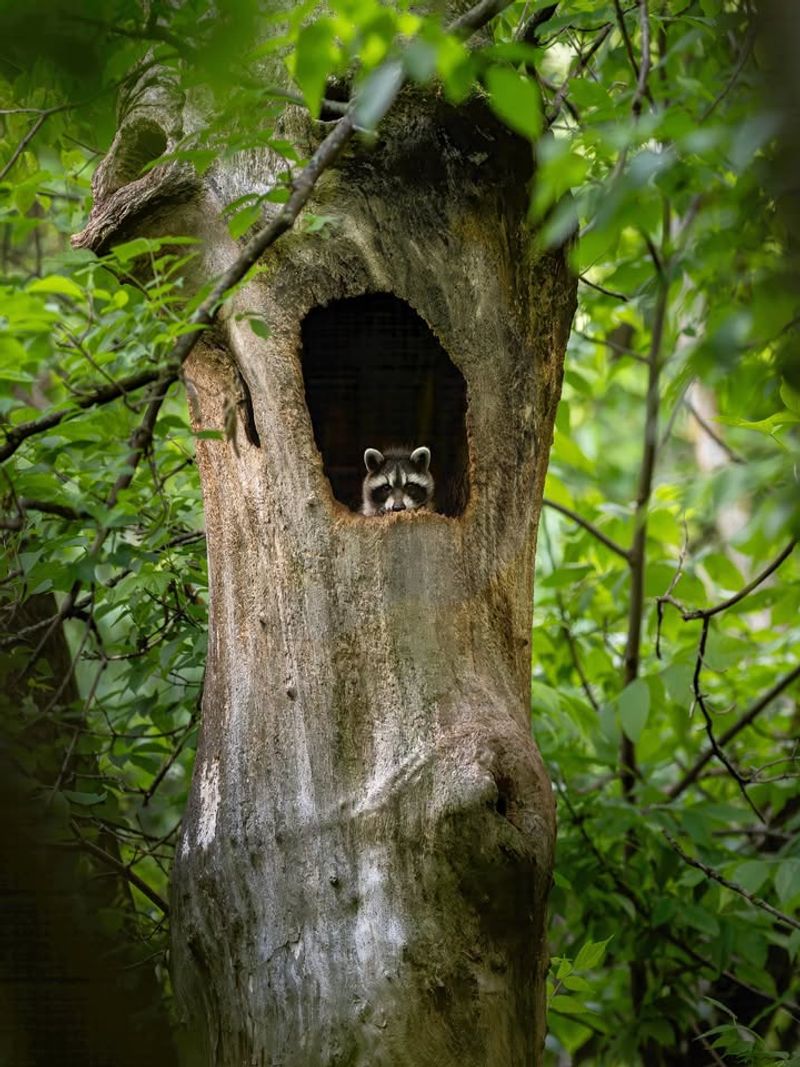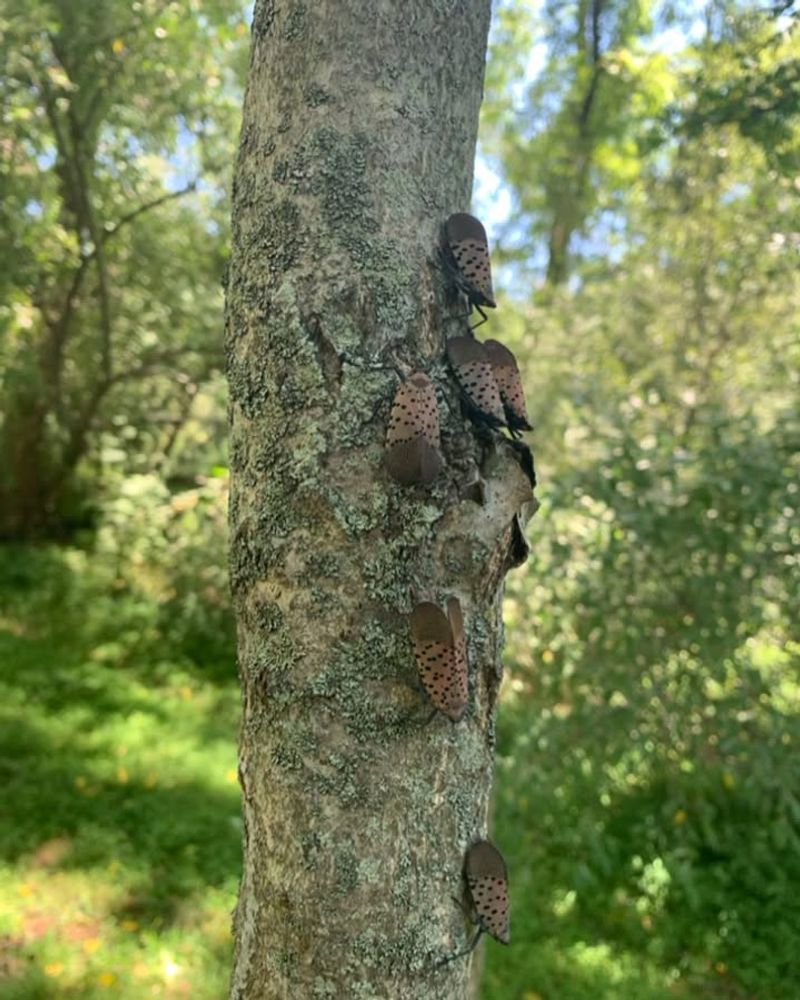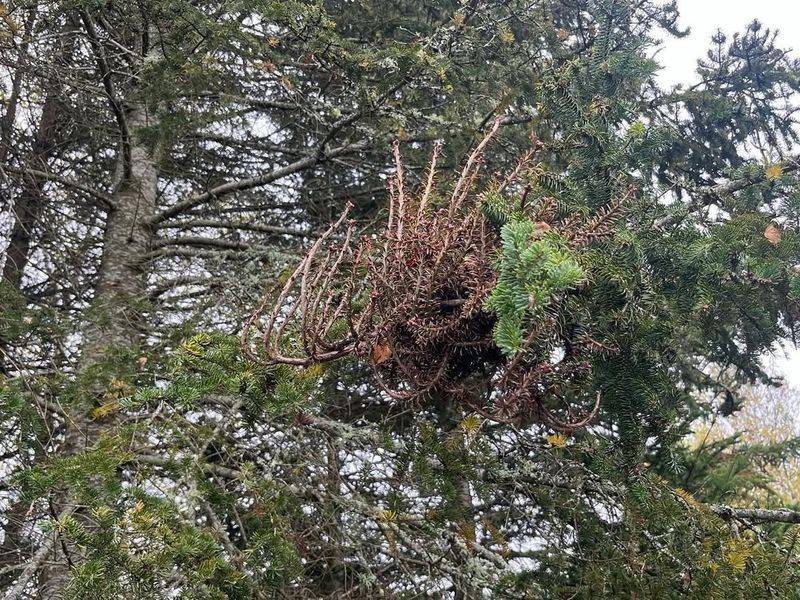You glance up at your backyard tree and notice a strange clump nestled in the branches. Most people assume it’s just a bird nest, but Pennsylvania trees can hold all sorts of surprises.
From insects building massive homes to animals seeking shelter, that mysterious bundle might be something completely different. Understanding what’s really up there can help you protect your property and the creatures living nearby.
1. A Squirrel Drey Built For Winter Survival
Squirrels construct leafy homes called dreys that look surprisingly similar to bird nests from the ground. Unlike birds, though, squirrels weave together leaves, twigs, and moss to create a weatherproof ball.
These clever critters often build multiple dreys throughout their territory as backup shelters. During Pennsylvania’s harsh winters, a drey’s thick walls provide essential insulation against freezing temperatures.
If you spot one, watch for squirrel activity during early morning or late afternoon when they’re most active.
2. Bald-Faced Hornet Colony Expanding Rapidly
That gray, football-shaped structure hanging from a branch isn’t a decoration—it’s a bald-faced hornet nest made entirely from chewed wood fibers. Colonies can grow to basketball size by late summer, housing hundreds of aggressive defenders.
Despite their name, these insects are actually wasps, not true hornets. They protect their homes fiercely and will chase intruders who venture too close.
Never attempt removal yourself; professional pest control experts have the proper equipment and protective gear.
3. Bagworm Infestation Threatening Tree Health
Small, cone-shaped bags dangling from branches signal a bagworm problem that can seriously damage your trees. Caterpillars construct these protective cases from silk and bits of foliage, camouflaging themselves perfectly.
Each bag contains a hungry larva munching on needles and leaves throughout spring and summer. Evergreens like arborvitae and juniper are favorite targets in Pennsylvania landscapes.
Hand-picking bags during winter months prevents spring hatching and protects your trees from widespread defoliation damage.
4. Eastern Tent Caterpillar Web Spreading
Silky white webs stretched across branch forks announce the arrival of eastern tent caterpillars every spring in Pennsylvania. Hundreds of striped caterpillars emerge from these communal tents to feed on cherry, apple, and crabapple leaves.
While unsightly, these native insects rarely kill healthy trees, though they can weaken young saplings. The caterpillars eventually leave to pupate, transforming into rust-colored moths.
Remove tents early in the morning when caterpillars gather inside for easiest control.
5. Raccoon Den Providing Daytime Hideout
Hollow cavities in mature trees make perfect raccoon dens where mothers raise their young during spring in Pennsylvania. Raccoons prefer natural holes but will expand woodpecker cavities or squirrel homes to fit their larger bodies.
You might notice scratch marks on bark or scattered droppings below the entrance. These nocturnal mammals sleep inside during daylight hours before venturing out to forage.
Coexisting peacefully is usually best since raccoons provide pest control by eating insects and rodents around your property.
6. Gypsy Moth Egg Mass Waiting To Hatch
Tan, fuzzy patches stuck to bark might look harmless, but each gypsy moth egg mass contains 500 to 1,000 hungry caterpillars ready to hatch. Pennsylvania forests have battled these invasive pests for decades as they defoliate oak and other hardwood trees.
Females cover their eggs with body hairs for winter protection. Come spring, tiny caterpillars emerge and immediately start feeding on fresh leaves.
Scrape egg masses into soapy water during fall and winter to reduce next season’s population.
7. Witches’ Broom Disease Deforming Branches
Dense clusters of twigs growing in tight bundles create formations called witches’ brooms that resemble messy nests from afar. Fungi, viruses, or mites cause this abnormal growth pattern, forcing branches to produce excessive shoots.
While usually harmless to the tree’s overall health, these deformities permanently alter branch structure. Hackberry trees in Pennsylvania commonly develop witches’ brooms from tiny mite infestations.
Pruning affected branches improves appearance but won’t cure the underlying cause of this curious condition.

